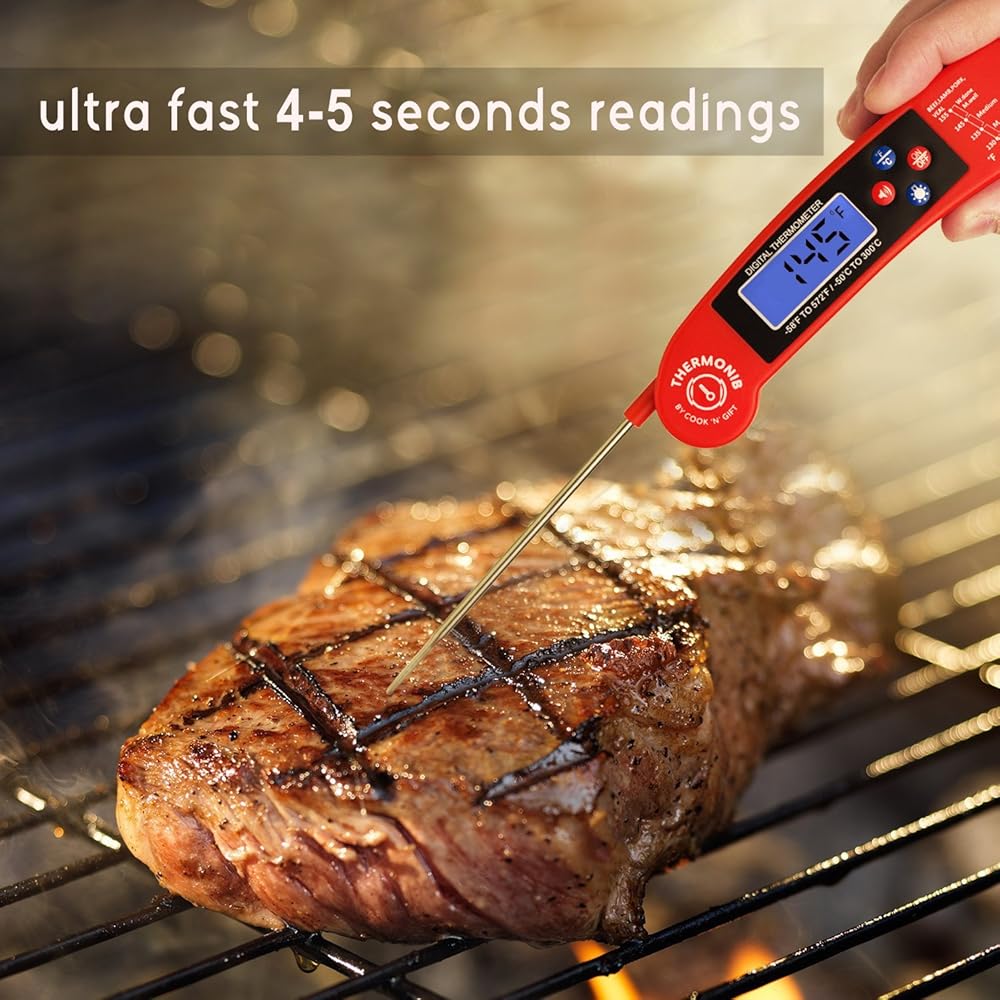Recently, I was halfway through making a cake for my daughter’s birthday party when I realized that the marshmallow fluff for the center was going to require a candy thermometer. I’d never needed a candy thermometer before, but quick research told me that while yes, you can estimate sugar temperatures through various methods, a thermometer is best for precise applications. I rushed out and grabbed the first thermometer I could find, but have since discovered that there is a whole world of great candy thermometers available for the modern cook.
Quick Comparison
What are you looking for in a candy thermometer?
While candy thermometers are a pretty basic concept – showing temperatures up to about 360F – there are a number of different features and functions. Depending on how often you’ll use your thermometer and how much it frustrates you to have multiple specialized gadgets in your kitchen, these may be more or less important to you.
Digital or Analog?
Digital displays tend to be easier to read, and often incorporate alarms to let you know when your candy has reached the right temperature. Analog displays might be harder to read, but are often less expensive.
Material?
Glass candy thermometers are very popular; thick tubes usually clip onto the side of the pan, and can be adjusted up or down to touch the heating solution. Metal thermometers tend to have a probe that sticks into the solution, with a dial or digital readout on top. These can also be clipped on.
Able To Be Calibrated?
This is a key feature for candy; having your thermometer off by even a few degrees can ruin your candy making. For the best results, you want to measure the temperature of boiling water (which should be 212F/100C) and adjust the thermometer if the temperature is off. Most digital thermometers cannot be adjusted; some analog thermometers can.
Multipurpose
Some probe thermometers come with preset alarms for a variety of different items, and some analog thermometers go up to 400F+, allowing them to be used for meats as well as candy. Whether you want a few different thermometers or one all-purpose thermometer has to do with whether or not you can find one that will read accurately across the spectrum.
Which Candy Thermometers Are the Best?
1. All Purpose Digital Thermometer

If you want a thermometer which will measure basically everything you ever need to measure, this Cook N Gift digital thermometer will do the trick. From grilling to roasting to making candy, this thermometer measures within 4 seconds, and lets you get going. But while it includes the temperature ranges you need for candy, there’s one thing I don’t love about this thermometer. It can’t be clipped to the side of the pot and give you continuous readings. This means that you have to guess when the candy is at the right temperature. Boiling sugar water changes temperatures rapidly and you could easily miss your target range if you’re not very careful.
2. Glass Candy/Deep Fry Thermometer

When you’re just looking for a classic glass thermometer to make some marshmallow fluff for your kid’s birthday cake, odds are good this is what you’ll grab; I did. These thermometers are generally inexpensive, hook on to the pot easily, and you can watch the temperature climb as you wait. This Farberware model ranges from 100F to 400F.
I really like that I can see the temperature climb as I’m stirring. When making candy, you generally have to keep your liquids moving so that they don’t burn, and trying to do that, and grab a probe thermometer, is frustrating. Some of my friends who use this type of thermometer get frustrated by the steam, which can potentially make the thermometer a little cloudy; I find that by turning on my exhaust hood, air keeps moving, and I don’t have any problems.
I also like that this thermometer comes with a case to keep it safe in my kitchen’s junk drawer. Let’s face it, that’s where your thermometers live too.
3. Probe Thermometers With Analog Readouts

Until very recently, I was more accustomed to seeing this type of thermometer used for meat cooking; having now made some candy, I can see how useful they would be for this function. This CIA Masters Collection model combines what is great about digital thermometers – the easy to read interface – with the benefits of glass thermometers – the ability to attach it to your pan and monitor the temperature as it climbs. When looking for this type of thermometer, however, make sure you have a way to adjust the height of the probe in relation to the clip. If your probe is touching the bottom or side of your pan, you’ll get an inaccurate reading, and your candy won’t cook properly.
This model also features a nut and wrench that can be used to adjust the temperature calibration, so that you can periodically test and recalibrate your thermometer as necessary.
Which thermometer do you need?
While I went with the glass model for my daughter’s birthday cake filling, if I find myself making more candy over time, the CIA version is what I’ll go for. It is a little hard to get at just the right angle to read the temperature, and I do worry about the glass eventually breaking due to rough handling. I like being able to adjust the temperature, if I find that the thermometer’s reading is inaccurate over time. And this is also a multipurpose gadget, since I can use it to measure temperatures in meats as well as candy and other liquids.


